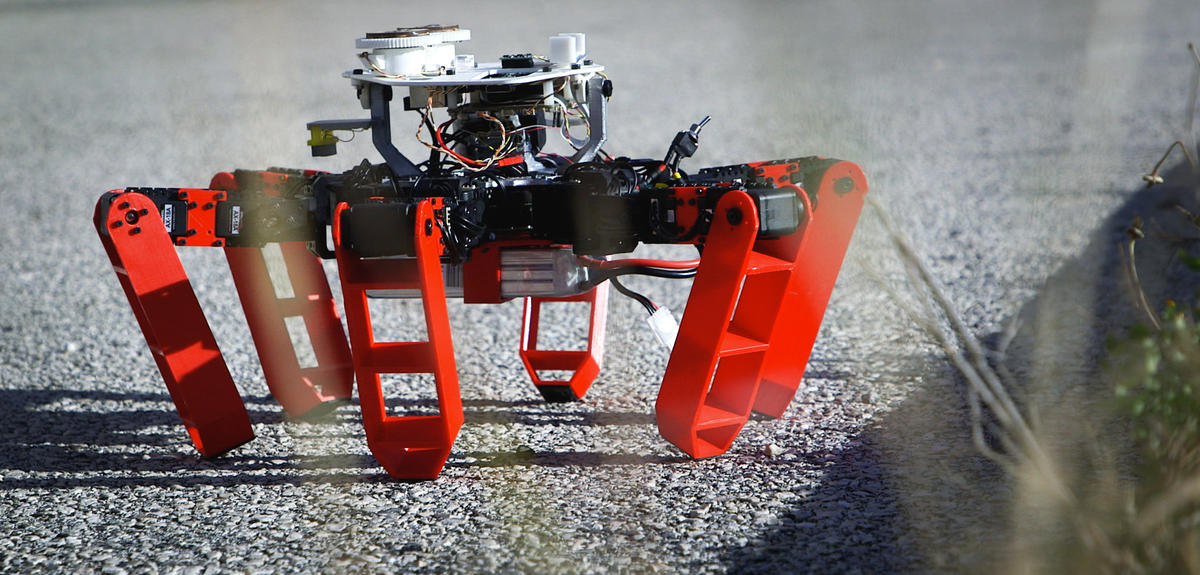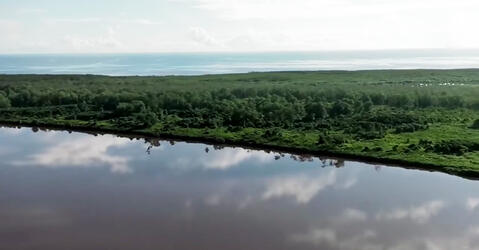You are here
One little head. Two eyes gazing skyward. Six little legs. And, for the first time for this type or robot - it knows how to get back to its nest, all by itself.
ITV Julien Serres, bioroboticist
So this robot is directly inspired by desert ants, also known as Cataglyphis.
This little machine, on the other hand, is called AntBot. The robo-ant.
It was born here, at the Institute of Movement Science in Marseille, in the South of France. In this lab, scientists work at the crossroads of robotics and biology. Their mechanical creatures are directly inspired by Nature.
Their last creation, Antbot, reproduces the behavior of the desert ant. Unlike other ant species, it can’t navigate using smell.
ITV Julien Serres, bioroboticist
Ants are highly efficient navigators, able to travel several kilometers, just like bees. They do this to gather food and then return to their colony.
This is the behavior the scientists were seeking to recreate. Their robot needed to be able to find its way home, after taking a random path.
ITV Julien Serres, bioroboticien
These specific ants travel along the ground. They have very few neurons in their brains, but do have a visual system with surprising properties - specifically, they can perceive light that is invisible to us humans.
The bioroboticists developed new types of sensors so that their robot could see the world just like an ant.
ITV Julien Dupeyroux, bioroboticist
Here’s the compound eye of Cataglyphis, the desert ant that inspired our work. You can see there’s this upper part, called the dorsal rim area, that we’ve mimicked with this celestial compass here. Both act as instruments capable of determining direction during navigation.
This celestial compass that enables both the ants and the robot, to have a sense of direction, detects the polarised light from the Sun, which is invisible to humans.
Ants must also gather information on the distances they travel. They do this by analysing the apparent motion of their environment as they move around. It’s what’s known as “optical flow”
ITV Julien Dupeyroux, bioroboticist
On this second part of the robot, we mimicked what happens on the lower part of the ant’s compound eye. It’s the part that measures optical flow. So that’s what’s done here with the Mapix sensor that consists of only 12 pixels facing the ground.
As the robot moves around, it senses the textured environment flowing underneath it. This provides information on distance to the robot. That way, it knows how far it has travelled since it’s last stop.
To develop Antbot, the bioroboticists pored over years of research by biologists working to understand how insects navigate their environment.
The biologists concluded that ants need three sources of information to keep track of their position in space :
-
Optical flow
-
Polarized light from the Sun
-
And they also count their steps.
The bioroboticists made sure Antbot could sense all three. They managed to show, in a controlled setting, that their machine could be as effective as a desert ant, that can find its way home after exploring its environment.
Both do this of course without using GPS, and without relying on a powerful computer.
ITV Julien Serres, bioroboticist
One goal of this project is to be frugal. We want to use a minimum of resources to accomplish very complex tasks.
And that’s what we’ve managed with the work we’ve done in bio-inspired robots. In the end we need very few photoreceptors to pull off tasks that are known, to current roboticists, to be extremely complex.
ITV Stéphane Viollet, bioroboticist
So being minimalistic has several advantages. First of all, the constraints force us to go places we would otherwise never go. To explore counter-intuitive solutions, for instance. It often leads us to new ideas and new technological solutions. If we wish to create a robot that can travel outside, without using GPS, it’s a good idea to see how Nature tackled the problem first.
This is an example of a robot mimicking a real life insect. But it’s a two way street. Instructions for building a replica Antbot have been provided freely to the scientific community.
These scientists hope that biologists will be able to use these robots to test various hypotheses concerning behaviour of ants in the real world and contribute to a better understanding of just what it is that makes insects tick.
Ant-Inspired Robot Navigates on its Own
Using Nature as a model for better robots? A team of bioroboticists in the South of France have created, for the first time, an autonomous six-legged robot able to—without using GPS—find its way back to its nest using navigation skills inspired by Cataglyphis, the desert ant.
Julien Serres (Aix Marseille Université)
Stéphane Viollet (CNRS)
Institut des sciences du mouvement - Étienne-Jules Marey (ISM)
Aix Marseille Université / CNRS





